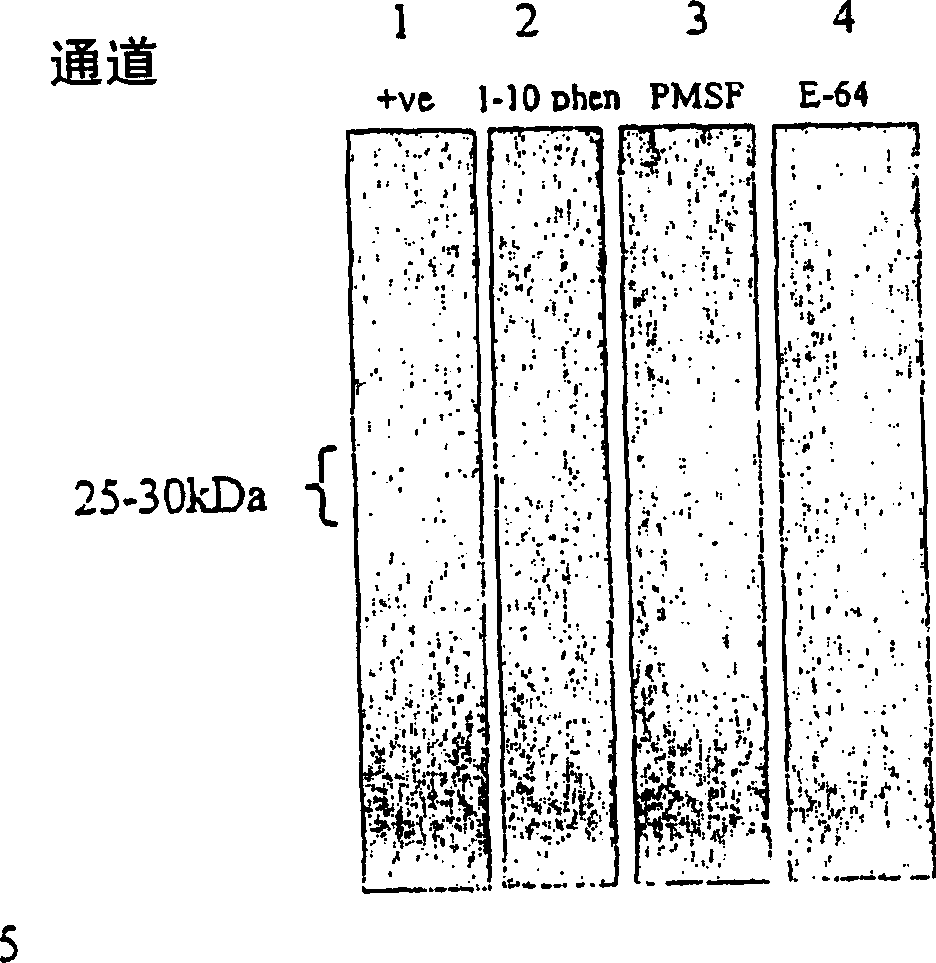Methods and compositions for controlling ectoparasites
A technology of ectoparasites and compounds is applied in the fields of inhibiting the hatching of ectoparasite eggs, treating and preventing ectoparasite infection, identifying compounds that can inhibit the hatching of ectoparasite eggs, and can solve the problems of inconvenience and increasing the danger of environmental hosts.
- Summary
- Abstract
- Description
- Claims
- Application Information
AI Technical Summary
Problems solved by technology
Method used
Image
Examples
Embodiment 1
[0188] Example 1-Evaluation of the hatching mechanism of lice eggs:
[0189] Evaluate the mechanism of lice egg hatching under a dissecting microscope. The female clothes lice were fed on the rabbit for half an hour and then transferred to a petri dish with human hair. The petri dish was then placed in an incubator at 32°C and 42% relative humidity. During the 5-hour feeding period, female lice begin to lay eggs. Each female lice lays up to 10 eggs in one hatch. The eggs develop in the next 7-9 days. The following changes are observed in the best 12 hours before hatching. With the developing embryo oriented with its head close to the hatching flap or lid, the eye of the developing embryo inside the egg is clearly detected. The embryo is observed to move inside the egg. Hatching occurs when the lid is opened, after which the embryos emerge quickly. First expose the head, then connect the chest to the legs. Finally, the abdomen protrudes and the larva crawls out of the egg, the egg ...
Embodiment 2
[0190] Example 2-Detection of protease activity in lice egg extract:
[0191] Within 12 hours of incubation, 50 individual lice eggs (Pediculus hunzcarauslaunzanus) were removed from the hair and placed in a 1ml eppendorf tube. 20 μL of distilled water was added to the unhatched eggs, and incubated at 32°C for 30 minutes. 20 μL was recovered and stored at -70°C. Many other samples were collected as described above. And collect the hair samples from which the unhatched eggs have been removed, and incubate according to the above steps. In addition, samples of unhatched eggs 7 days after laying eggs (within 24 hours of egg hatching) and hair samples from which lice eggs were removed were collected. Both samples were washed with 10 ml of 1% sodium hypochlorite solution for 1 minute, followed by washing with 25 ml of distilled water for 5×1 minutes to remove hypochlorite. Then, these samples were incubated in 20 μL of distilled water as described above. In addition, a group of 25 lice ...
Embodiment 3
[0195] Example 3: Characteristics of protease in eggshell washing:
[0196] In order to evaluate the possibility of lice hatching protease in eggshell washing as a target to inhibit egg hatching, the characteristics of hatching protease must first be determined. Four protease inhibitors are used to classify the proteases in ESW.
[0197] The 10% SDS-PAGE gelatin substrate gel was loaded in a freeze-dried egg shell wash from 100 lice eggs, which had been resuspended in 50 μl non-reducing sample buffer, and the sample was run at 10 μl / channel. The gel was run at 10 mA / gel at 4°C for 10 minutes, followed by 15 mA / gel for another 25 minutes. Then, the gel was cut into bands, and each band was incubated in a 2.5% Triton-X 100 solution containing a specific inhibitor for 2×20 minutes. The inhibitors used were serine protease inhibitor PMSF (5mM), metalloproteinase inhibitor 1,10-phenanthroline (10mM), aspartic protease pepstatin (5plM) and cysteine inhibitor E-64 (10mM). Then, the gel...
PUM
 Login to View More
Login to View More Abstract
Description
Claims
Application Information
 Login to View More
Login to View More - R&D
- Intellectual Property
- Life Sciences
- Materials
- Tech Scout
- Unparalleled Data Quality
- Higher Quality Content
- 60% Fewer Hallucinations
Browse by: Latest US Patents, China's latest patents, Technical Efficacy Thesaurus, Application Domain, Technology Topic, Popular Technical Reports.
© 2025 PatSnap. All rights reserved.Legal|Privacy policy|Modern Slavery Act Transparency Statement|Sitemap|About US| Contact US: help@patsnap.com



